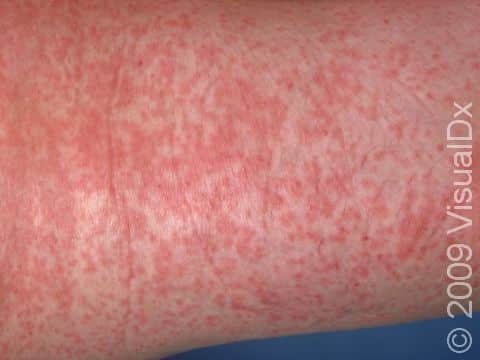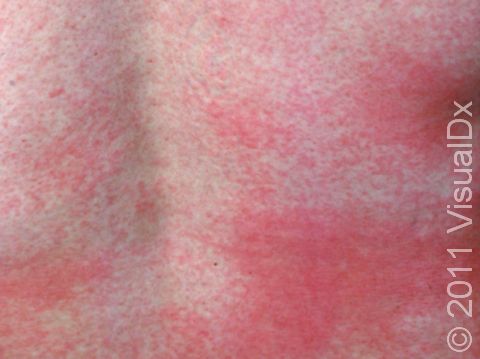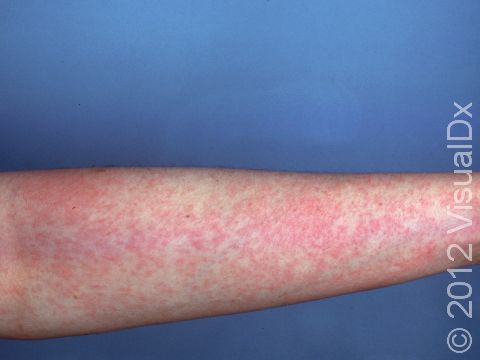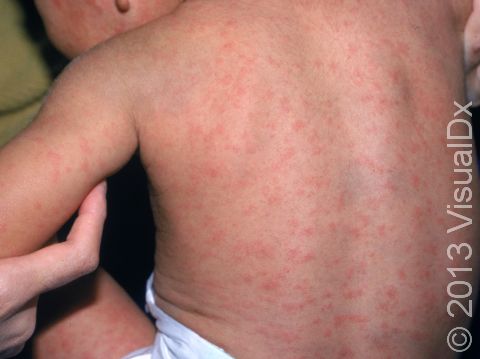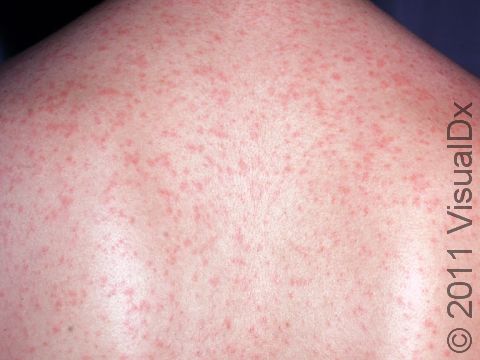German Measles (Rubella)
German measles (rubella) is caused by the rubella virus and spreads among humans through contact with fluids in the respiratory tract. The development (incubation) period of German measles is 14–21 days before starting to feel ill, and a rash accompanied by fever appears 1–7 days later. German measles occurs more commonly in the spring and summer months. Even in a person with a weak immune system, German measles is usually a mild illness. However, if a pregnant woman becomes infected, German measles can cause severe damage to the unborn baby.
Who's At Risk?
German measles is rare in the United States due to required vaccination, usually given twice before children start attending school. There is a higher incidence of German measles in people who are in confined situations such as military bases and schools. Most infections seen in the US occur in young adults who have not been vaccinated. German measles is commonly seen in disadvantaged people, migrant workers, and new immigrants.
Signs & Symptoms
- Your child may develop irritability, fatigue, headache, fever, and minor respiratory symptoms 1–7 days before the rash appears. Areas in the neck and other areas (lymph nodes) may become swollen.
- Children may have pain when trying to move their eyes side to side (lateral movement) or upward.
- Pink, flat spots begin to appear on the face. Within one day, the rash fades from the face and spreads to the torso (trunk) and arms and legs (extremities). The pink, flat spots (macules) merge together on the trunk but remain separated (discrete) on the extremities.
- Peeling often occurs later in the rash areas.
- The rash may itch, and it is usually gone in about 3 days. As many as 25% of outbreaks may have no rash.
- The affected child is contagious to others from a week before to a week after the rash appears.
Self-Care Guidelines
German measles is generally mild, and an affected child can be cared for at home.
- To relieve discomfort and fever, give the child acetaminophen (Tylenol®) or ibuprofen.
- Avoid contact between the child and any woman who might be pregnant. If there is contact, tell the woman to call her doctor for advice.
Treatments
Tests might be done, if needed, to confirm the diagnosis.
Visit Urgency
If your child has a fever over 102 degrees Fahrenheit or if the child appears very ill, call the doctor.
Trusted Links
References
Bolognia, Jean L., ed. Dermatology, pp.1259-12602. New York: Mosby, 2003.
Freedberg, Irwin M., ed. Fitzpatrick’s Dermatology in General Medicine. 6th ed. pp.2041. New York: McGraw-Hill, 2003.
Last modified on October 10th, 2022 at 8:02 pm

Not sure what to look for?
Try our new Rash and Skin Condition Finder
